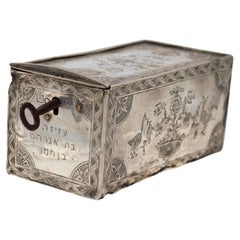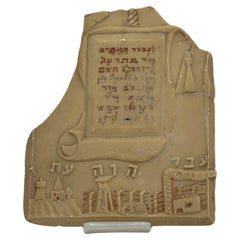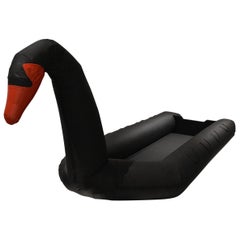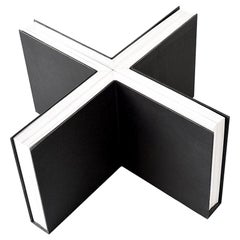Middle East - Folk Art
Mid-19th Century Algerian Antique Middle East - Folk Art
Silver
1940s Cypriot Vintage Middle East - Folk Art
Soapstone
2010s Lebanese Minimalist Middle East - Folk Art
Marble, Brass, Stainless Steel
2010s Israeli Modern Middle East - Folk Art
PVC
2010s Israeli Modern Middle East - Folk Art
Iron
2010s Israeli Modern Middle East - Folk Art
Iron
2010s English Modern Middle East - Folk Art
Fiberglass
2010s American Folk Art Middle East - Folk Art
Metal, Steel
1880s English High Victorian Antique Middle East - Folk Art
Leather, Hardwood, Boxwood
2010s Italian Modern Middle East - Folk Art
Leather
2010s Italian Modern Middle East - Folk Art
Leather
20th Century French Art Deco Middle East - Folk Art
Marble, Bronze
1930s American American Craftsman Vintage Middle East - Folk Art
Brass, Copper
Early 20th Century American Folk Art Middle East - Folk Art
Pine
19th Century African Antique Middle East - Folk Art
Metal
Mid-20th Century Italian Mid-Century Modern Middle East - Folk Art
Silver Plate
2010s Italian Modern Middle East - Folk Art
Leather
1960s Mid-Century Modern Vintage Middle East - Folk Art
Walnut
Read More
A Giant Wedding Cake Has Us Looking at Portuguese Tiles in a New Light
At Waddesdon Manor, artist Joana Vasconcelos has installed a three-tiered patisserie inspired by the narrative tile work of her homeland. We take a look at the cake sculpture and how Portuguese tiles have been used in architecture from the 17th century to today.
Why Jules Chéret Was the King of the Modern Poster
The streets of fin-de-siècle Paris were set aglow with colorful poster ads, thanks to the printing techniques invented by Jules Chéret. Now, the Milwaukee Art Museum is celebrating this undersung talent in America's first solo show dedicated his exuberant works.
Why the American Flag Has Had So Many Different Star Patterns
Expert Jeff Bridgman explains the history and meaning behind the twinkling constellations that have graced Old Glory.
Peggy Guggenheim Loved Modernism, but She Also Collected Tribal Art
The iconoclastic style setter displayed African and Oceanic art, as well as works by indigenous peoples of the Americas, alongside pieces by such major modernists as Pablo Picasso and Jackson Pollock.
The 13-Star American Flag Had More Variations Than You’d Think
Perfect for July 4th weekend, a new show at Philadelphia's Museum of the American Revolution displays an array of antique red, white and blue flags.
Tramp Art, America’s Most Misunderstood Art Form, Is Trending in Interiors
Designers are beginning to see this enigmatic form of folk art in a whole new light.






